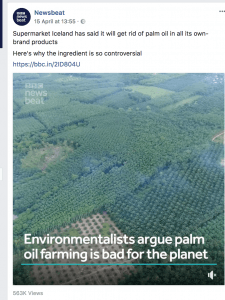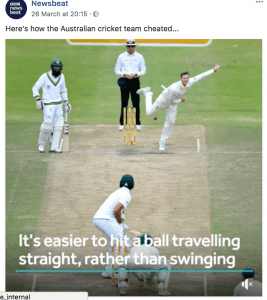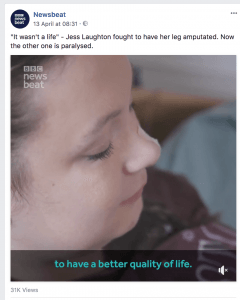Due to our podcasts being very similar to documentary in their format, it is integral that we strike the right balance between keeping them as podcasts in their delivery and nature but also deliver enough information for them to be considered as interesting, the beauty of the podcast is that it also allows us to create a more personal feel due to it being a podcast. The way to get this balance right is through the script that is written.
The first source I looked at was Voices.com which had some interesting points on how to script specifically for a podcast rather than anything else. Apart from the basic concepts of allocating the amount of time you want to spend on each topic and deciding the guests that you want to have on it did offer some interesting ideas. The first of these is by making sure that the writing style that is being used fits the piece and is friendly with limited technical language so that the listener can relate. It is also important that the style fits the place where it is going to be delivered, in my case, this will be as standalone podcasts and as a piece that airs on Siren FM. The article also explains the importance of a short and concise introduction so that listeners understand what is being talked about and know what to expect.g to This is important for both the podcast version and the radio version as the listeners must be able to understand what is going on and going to be talked about.
Ultimately this article suggests that the tone of delivery i.e the word choice and style is of most importance and that the introduction to it should be well crafted and short so that the listener knows what is going to be discussed and is not lost, as I found out in my last project a bad introduction can ruin the whole thing.
The next article I read was from a company called Raddix which is a marketing agency. They present three key tips for scripting a podcast these being the following:
Calculate a word count that fits the desired length of the programme, this means that you know how long the script should roughly be and that you do not over or underwrite in terms of content so that each podcast is the correct length, in our case this is around the 20 minute mark and for the broadcast version it will be 57 minutes due to Siren FM’s news. The next tip that is suggested is that you write with your speaker in mind and don’t use words that they do not understand or know how to pronounce properly and that as a general rule you do not use overly complex language. They also suggest that the formatting of the script is crucial in making it easy to read and that pauses should be written in so that person is reminded to breathe, this is important for myself as I will be narrating the piece and am also guilty of reading too fast and as a result not stopping for commas etc. Their final tip is to read the script aloud due to this helping to make sure that something makes sense and if it is relatively easy to read.
The important things to take from this article is making sure that the script is well formatted so that the presenter (myself) can read it easily and make sense of it. The point that is raised about pauses is also important as if I had not thought about this I wouldn’t have implemented these and as a result would have been more likely to struggle. I have also worked out the number of words that will be needed for each episode of the podcast, this being roughly 2500 going with a reasonable delivery rate, this will include the pre-recorded parts as these will be transcribed to allow us to put them in the script and edit more easily due to timecode.
https://radix-communications.com/scripting-podcasts-three-tips-for-writing-podcast-episodes/
The next website i viewed was called The Podcast host which presents three methods of writing a podcast, the first being the word for word script. The advantages of these are that good for people who are uncomfortable in adlibbing and makes sure that everything is said and all the facts are discussed, however, the negatives are that it can sound very robotic and it will lack personality. The second method is through a detailed guide meaning that all the topics are written down and there are things such as cues and questions but there is room for adlibbing and on the fly presentation. Allowing for both facts to be delivered and at the same time mixing personality. The final method is through bullet points, this means that topics and questions are written down in bullet points to establish the direction with all of the speech being thought of on the fly, allowing for personality but also the potential to miss important elements and facts. Being that this podcast is more of a documentary style personality is not really needed in them, bar the one on speech therapy which is my own personal story. This means that I will most likely script my lines in their entirety so that everything is said and then can work on a way of getting personality through these rather than by adlibbing my points.
https://www.thepodcasthost.com/planning/podcast-scripting/
The next website I looked at was more focused on straightforward camera based documentary, this means that not everything they mentioned was relevant, however, some of the ideas were relevant and could be implemented. First of all, it is suggested that writing a brief outline or a rough script, as this can help with the direction of a piece even if you do not have any audio and this can help to form a structure so that time is saved and not wasted in between conducting interviews etc. They also suggest that transcribing audio makes the process of editing a documentary easier, as it allows for you to see all the words on a page rather than have to scroll on a timeline to find it, ultimately making the process much easier and quicker and this is the way that we have decided to edit the podcasts. They also suggest that we should plan a begging, middle and an end as every story has one of these and it stresses the importance of what goes in the middle of the piece as sometimes this can be barren. Whilst we aren’t telling a story in its entirety we do need to try and make stories as this is what hooks people to listen to the pieces.
https://www.desktop-documentaries.com/how-to-write-a-script.html
Finally, I watched a BBC academy video about the use of language for radio documentary and what type of language you should and shouldn’t use within scripts, it also talked about the tone of the piece and how you should set this. The video focused mostly on the language that is used in documentary and how words should effectively work together with sound effects to create a narrative and paint a picture for the listener. The video also stressed the importance of being direct in the language that is used and using short sentences to make pieces flow and be of maximum impact to the listener, there should be no more than an average of 16 words per sentence and these words should be clear and precise and make sense rather than raising questions. Finally getting rid of overused words is vital so that pieces do not become static and boring to the listener. Ultimately what this video taught me was that the language used in the script is key and should be clear and fit the target audience this being Siren FM’s audience.
http://www.bbc.co.uk/academy/journalism/skills/writing/article/art20130702112133594



